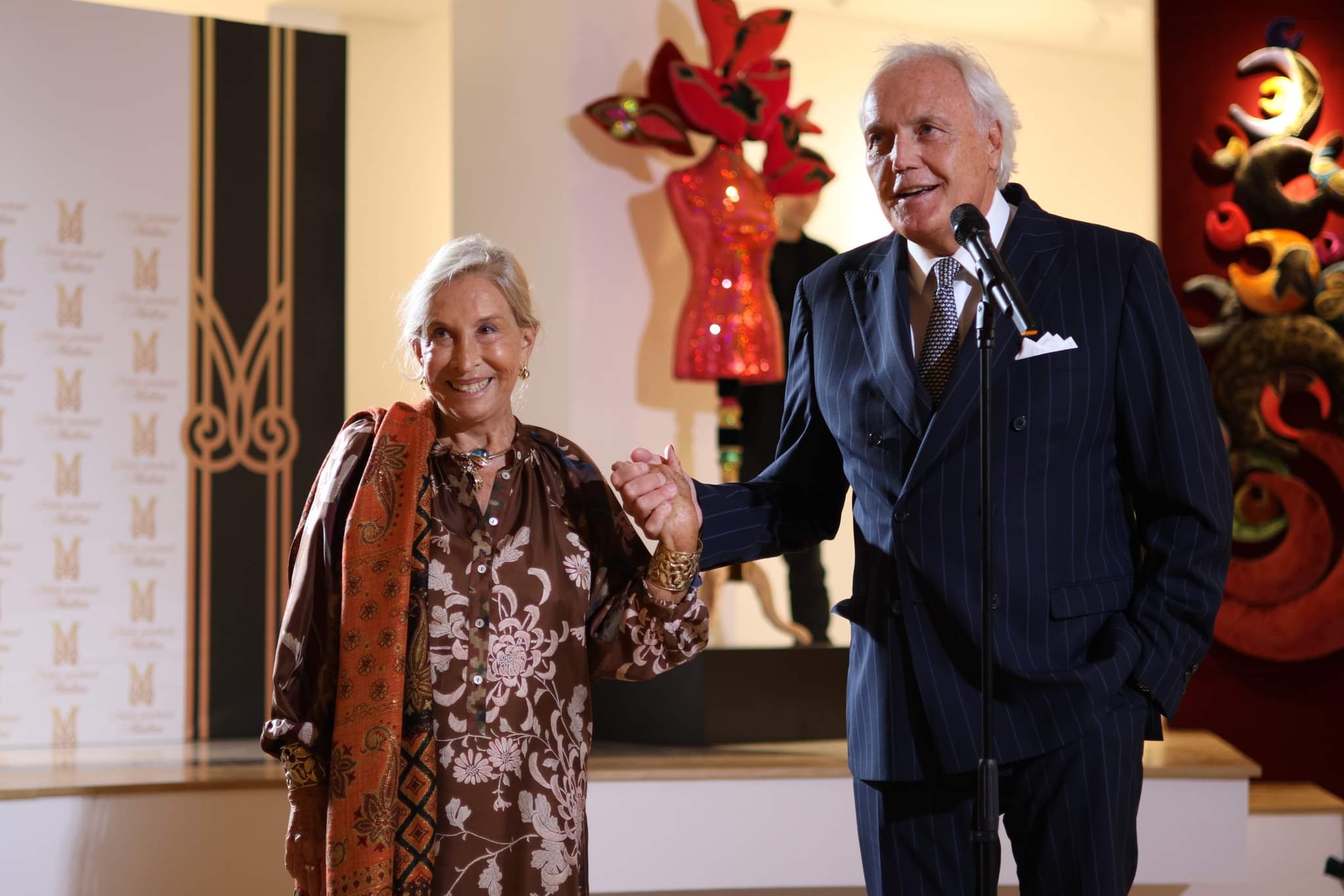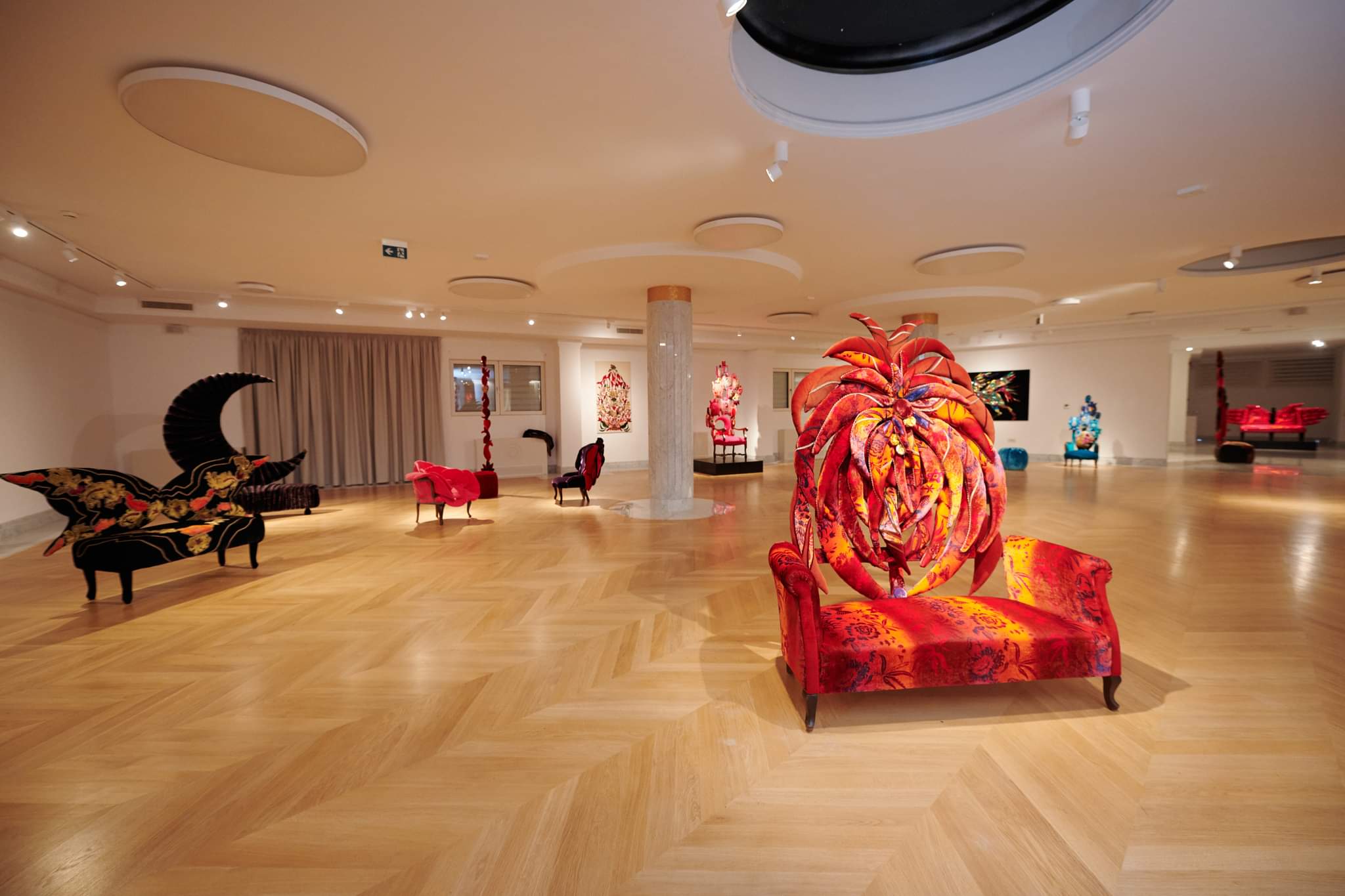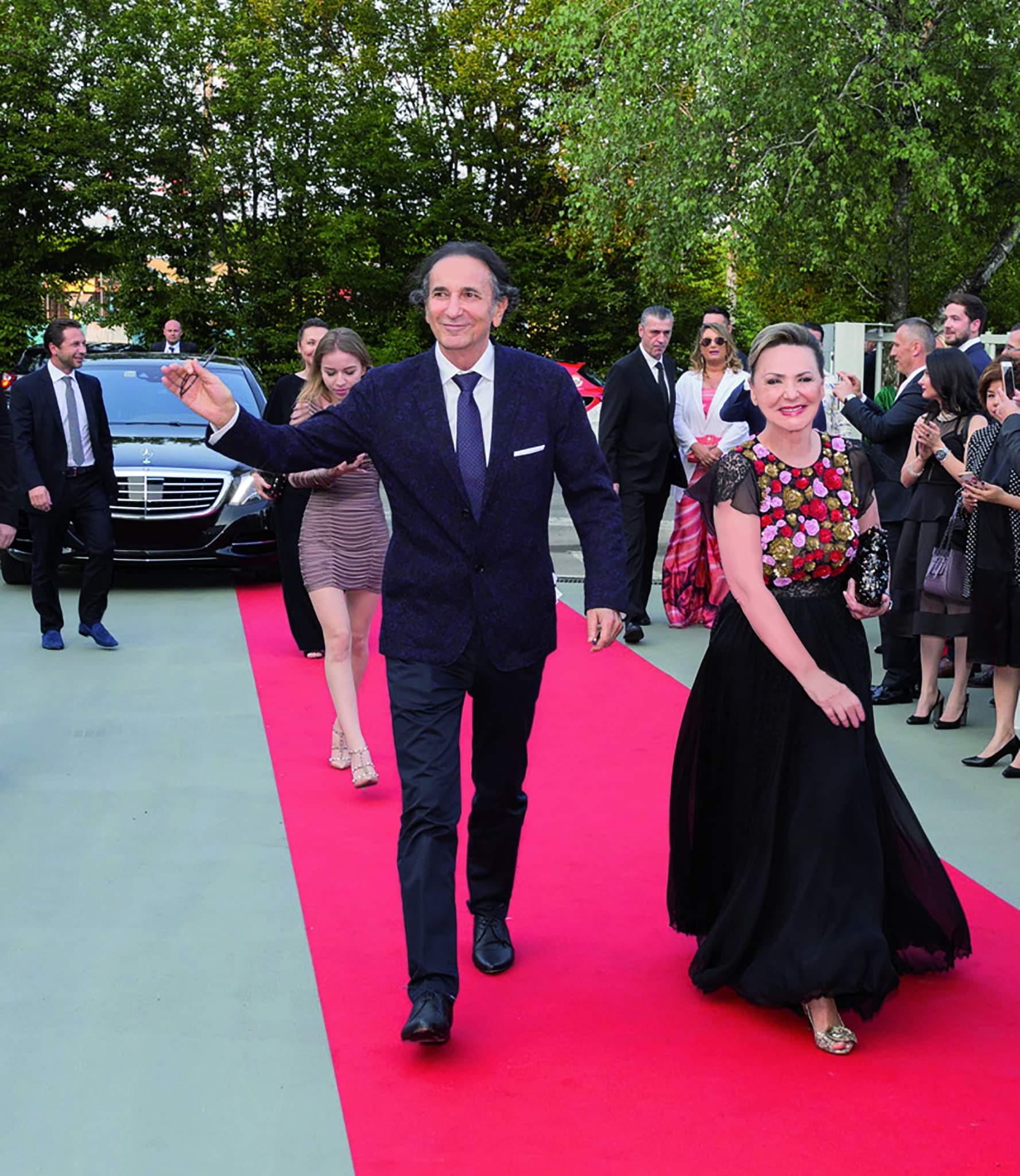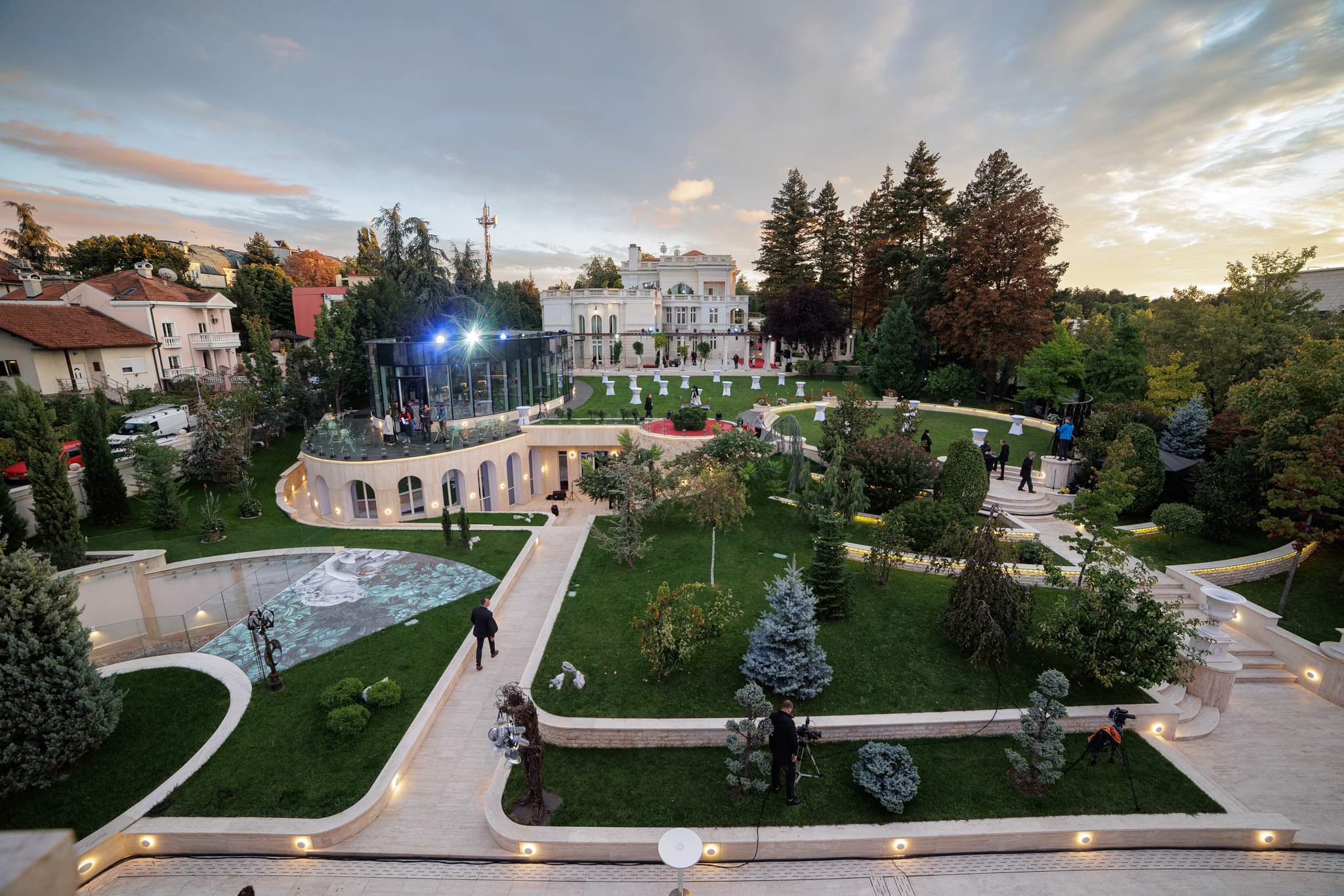Interview by Nino Tsipuria for Palitra Holding
In the last week of September, the attention of Europeans was attracted by Belgrade, specifically by the opening of the new cultural center of Belgrade. Madlena Art Palace – this is the name of 7000 sq.m. cultural space that will host exhibitions, conferences, poetry evenings, various events and theater performances. The authors and implementers of this idea are the patron husband and wife Madlena and Philip Zepters.
In 2016, Forbes magazine named Philip Zepter as the number one richest person in Serbia. They are associated with the largest investments for the development of the cultural life of Serbia – Formula 1, the Hockey World Cup, the ATP tennis competition, the Cannes Film Festival, the construction of the first private opera house in Europe, the Madlena Zepter Foundation, the Zepter Museum (opened in 2010), the Literary Award, the International Design Award , sponsorship of the publishing house, the first auction house and many other cultural events.
Today, Zepters’ investment in culture and art is worth millions. Madlena Zepter is one of the most desirable and hard-to-reach respondents for the European and American media.
Exclusively, a famous patroness in Europe tells us about her life, success and love story.
 “My passion for art has its roots in my family, where art was appreciated and mutual love and humanitarian spirit were fundamental values,” she tells us. “According to my philosophy, beauty is not only inherent in human nature, but is also a spiritual need to be satisfied to improve our society.
“My passion for art has its roots in my family, where art was appreciated and mutual love and humanitarian spirit were fundamental values,” she tells us. “According to my philosophy, beauty is not only inherent in human nature, but is also a spiritual need to be satisfied to improve our society.
“Beauty is not a luxury or something superfluous but something necessary for humanity, for its development and identity, so much so that a truly civil and just society cannot ignore it,” Zepter notes.
“Today we live in an era that, for a number of obvious and sometimes conflicting reasons, seeks the approval of taste and creativity. Beauty often becomes foreign to ordinary life and our relationship with the arts, with nature and with our own bodies is problematic. I have always tried in many ways to cope with this impoverishment by offering opportunities for artists and young people to ‘know themselves’.
“Objects and paintings are small pieces of infinity that are captured and embodied in something tangible: it is our job to enjoy them, use them and introduce them into everyday life. In my museum, too, the works on display vary and move: the important thing is that they can be seen and enjoyed,” she says.
The realization of the programs of the Madlena Art Palace started with a visual art sensation, with originality and boldness, with Chairs by Carla Tolomeo, which as an example and a guiding light for the future. Once, Carla Tolomeo told me during an interview – “I would say that everyone finds a piece of their childhood that they thought lost in the chair he or she chooses. A little paradise lost and found”.
We ask Mrs Zepter, what did she find in her friend Carla Tolomeo’s masterpiece?
“My dear friend Giordana Mill introduced us to each other for the first time in Milan, during an arts patronage party at the Prince of Savoy for our company’s 20th anniversary. Our acquaintance continued through meetings, evenings in my theater, and projects for the future,” she tells us.
 “One day, I went to her studio and I believe that it was then that we sowed the seeds of friendship. I fell in love with her creations and artistic vision to the point that I appointed her to chair the jury of the International Design – Artzept competition, and I chose furniture of her creation for my houses in Paris, Monte Carlo and Belgrade. Choosing Carla to produce the seats of the new theater in the Madlena Art Palace was the natural development of our common way of feeling and experiencing art, culture and beauty. And so Carla permanently contributes to the magic of the interiors of my new building. With the inauguration of her solo exhibition in Belgrade, she started what will be an example and a guide for the future exhibitions of the Madlena Art Palace.”
“One day, I went to her studio and I believe that it was then that we sowed the seeds of friendship. I fell in love with her creations and artistic vision to the point that I appointed her to chair the jury of the International Design – Artzept competition, and I chose furniture of her creation for my houses in Paris, Monte Carlo and Belgrade. Choosing Carla to produce the seats of the new theater in the Madlena Art Palace was the natural development of our common way of feeling and experiencing art, culture and beauty. And so Carla permanently contributes to the magic of the interiors of my new building. With the inauguration of her solo exhibition in Belgrade, she started what will be an example and a guide for the future exhibitions of the Madlena Art Palace.”
 Mr Zepter once said that ‘At airports, in the streets and at exhibitions around the world, I am approached by people who, to my surprise, recognize me and thank me for doing what I do. Such words always bring tears to my eyes. I learned to think beyond the recognized, secure and established. I learned to work, but also to live life as a dream in which many things are possible. And the more possible they are, the more real the dream.’ We ask her now if she has a dream which hasn’t come true yet.
Mr Zepter once said that ‘At airports, in the streets and at exhibitions around the world, I am approached by people who, to my surprise, recognize me and thank me for doing what I do. Such words always bring tears to my eyes. I learned to think beyond the recognized, secure and established. I learned to work, but also to live life as a dream in which many things are possible. And the more possible they are, the more real the dream.’ We ask her now if she has a dream which hasn’t come true yet.
“I am a dreamer, albeit a very practical and realistic one,” she says. “I’m a woman who imagines a better world, who firmly believes in the function of art and who dreams about a quality of life that can enhance people’s material and spiritual well-being. My work is sustained by idealism and the need to combine professional achievement with the realization of a project larger than a purely personal one. I can say that I am a lucky woman because I have realized many of my dreams through my cultural, artistic and professional projects. However, I cannot stop dreaming, because dreaming means going beyond the shackles of fear and devising a possibility to affect reality. Only someone who still has unfulfilled dreams can be satisfied. In my heart there are still dreams to be realized, but I want to keep them for the future as a motive to act and a promise of happiness.”
In 2010, when she opened Zepter Museum at the heart of Belgrade, in a building dating back to 1922, which is under official state protection, Mrs Zepter presented a treasure trove with the works of nearly 200 artists, represented by 500 paintings, installations and sculptures, arranged over three floors. In this period, the Serbian capital’s National Museum and Museum of Contemporary Art were both closed for renovation, and she gave people who were missing Art and Museums a chance to be inspired again. Later, she founded the Zepter International Award – Artzept, for high achievement in design and applied art, which has been awarded for 18 years now. We wonder what the most important moment for her was throughout this process; the mission.
“Creating a work on canvas, in stone, clay or metal means speaking a language older than words and connecting the world of ideas to the material world,” she says. “A work of art is always a primary emanation of the spirit that exists within us even before it is transferred to the canvas or takes shape in the material.
“Existing both in the world of ideas and in that of reality, a painting is a bridge, a passage between dimensions that provides answers to the great universal enigmas and can grasp the signals that we find whose alphabet we learned in our dreams – the deepest levels of our consciousness.
“The paintings and sculptures introduce us to new realities, invite us to enter new rooms full of meaning; and they enrich them with our experience.
We next ask her how she met her husband.
“I met him in the Belgrade University Library. Meeting this courageous and charming young man was like a contact between different worlds that could compensate and unite, in a fruitful and life-giving exchange, for the creation of something new and better. Charm and confidence, idealism and openness, the splendor of a young philosopher and the innocent joy of a child, refinement and willingness to learn, good will, ability, love and understanding … this is Philip Zepter, my partner for life. Strengthened by a deep love, we left Belgrade together to conquer the world: Vienna, Linz and Munich, and later on sixty-five countries around the planet.
“For me, love between two people is a meeting of two personalities, a form of mutual completion. Neither of us would probably have reached our present position without the other. I would say that we brought out the best in each other. I found in Philip poetry combined with a great pragmatism that could not fail to fascinate me. In him I sensed a courageous dreamer, ready to take risks in order to realize his ideas.
 Did the girl who met her love in the University Library in Belgrade in 1972 change through these 50 years? And what advice can you give the girl from library?
Did the girl who met her love in the University Library in Belgrade in 1972 change through these 50 years? And what advice can you give the girl from library?
Our meeting was a moment that has marked and changed our lives. One of those moments when everything suddenly becomes different, when everything suddenly becomes silent as two hearts listen to each other for the first time. It is a magical moment in which everything stops to start again. Today, 50 years later, reason leads me to think that that magical silence was linked to the library, the environment in which our meeting took place; my heart, on the other hand, knows with certainty that that moment was the beginning of 50 years of life and work shared with joy and great success.
Witness the fact that the path we have taken has been very exciting, not only because of the professional successes of the last 50 years, but above all owing to feelings experienced at a human, cultural and social level.
The girl I was then continues to live in me and will never die. Today I would whisper to her: “You may not know it yet, but today your great love story is beginning, which will accompany you throughout your life. Go towards your future with your heart and soul open to the world”.
Art & Beauty Are My Only Ideologies – these are your words and my next question is about your childhood memories. Because we all come from our childhood. Tell us about your childhood.
I was a girl fascinated by train journeys in summer, excited by my role in my mother’s fashion house, in love with postcards and music, a ‘little woman’ who imagined her future in the world. I nourished myself with both reality and fantasy and tried to respond intelligently to the difficult and hard times of the post-war period. My parents taught me important values, and they were an example of freedom and dignity.
I inherited from my father Martin a love for beautiful things, poetry and sport. I have a fond memory of him.
My father’s Slovene family, with its strong principles and northern outlook instilled in me healthy habits regarding work, order and discipline. My father was an expert in his business and loved French culture, smart clothes, Panama hats, the Red Star football club and tennis, and taught me how to overcome all the problems and difficulties of a period marked by socialist realism.
My mother Divna, coming from a large and wealthy family, passed on her ethical and aesthetic principles to me. When I was with her, I always felt relaxed and young at heart but at the same time confident, proud of myself and truly happy.
She was a sincere friend with whom, even as a mature person, I shared many beautiful moments and hours. Her presence was precious to me.
I am aware of how much my conception of life and the consolidated experiences in my childhood have marked me emotionally and intellectually.
My role models include strong women, create and independent such as Lou Salomé, Colette, Marguerite Yourcenar, Coco Chanel and Peggy Guggenheim.
You are founder and owner of the Madlenianum Opera and Theater in Belgrade, Serbia, the first privately owned opera and theater company both in Serbia and in south-eastern Europe. How did the idea come about?
 Bringing back to life something that has ceased to exist is the most difficult of beginnings. Nothing more remained of the Zemun National Theater than the walls and the roof: the rest was just a sweet dream. When we started its difficult restoration in 1997, the impossible was the only reality we could expect.
Bringing back to life something that has ceased to exist is the most difficult of beginnings. Nothing more remained of the Zemun National Theater than the walls and the roof: the rest was just a sweet dream. When we started its difficult restoration in 1997, the impossible was the only reality we could expect.
The Madlenianum is the crowning of my life’s work in culture and the result of several decades of experience gained in European countries, an experience that I wanted to transfer here to Serbia and Belgrade, and especially to the atmosphere and spirit of the old Zemun.
I believe that going to the theater also means being hosted in a welcoming environment, furnished with beautiful objects, where everything can sharpen the senses and prepare you for the show: this is the reason for collateral exhibitions, waiting rooms and targeted use of space.
This is why the Madlenianum Theater was created. A beautiful yet functional building with exhibition areas, which has given Belgrade its second theater and above all a place for opera, prose, music and ballet, and for experimenting. A place open to art where spectators can see excellent shows, visit exhibitions and enjoy beautiful and intelligent architectural solutions. There are not many cities in the world that can boast more than one opera house. Since 1997 Belgrade has been one of them!
Is there anything you wish to change in the world? And what would you change, if you could?
I have always been committed to building the society which I believe and work in, and with the means that I consider most appropriate to obtain it. I would like a world with more love and empathy towards all mankind.
I believe in social justice, support initiatives for developing countries and help young artists and students of Serbia with scholarships; I think that art is the driving force for giving voice to human spirituality and therefore I build theaters and galleries and I am committed to promoting writers and artists; I advocate values such as loyalty, cooperation and creativity.
 What would I change in the world if I could? Good question. I am not sure I could change anything, but I believe that every person must always give their best in the knowledge that they may not see the results of their efforts themselves, but will leave them to future generations.
What would I change in the world if I could? Good question. I am not sure I could change anything, but I believe that every person must always give their best in the knowledge that they may not see the results of their efforts themselves, but will leave them to future generations.














